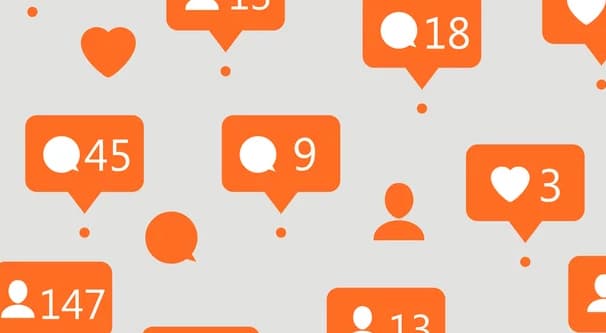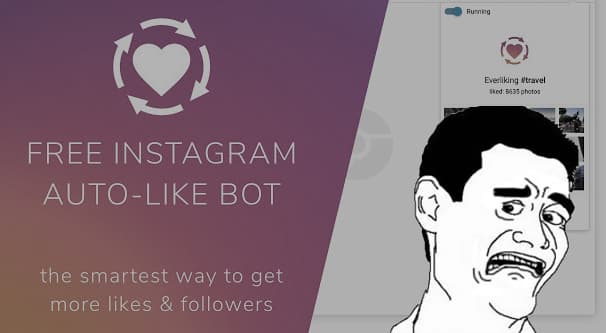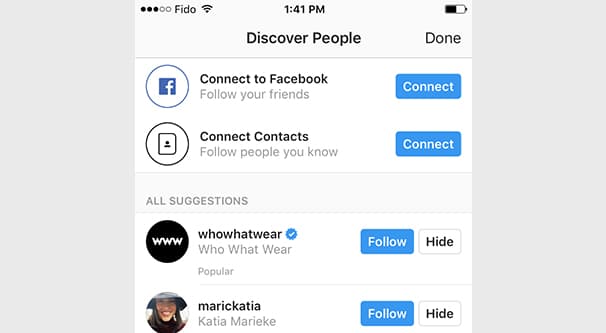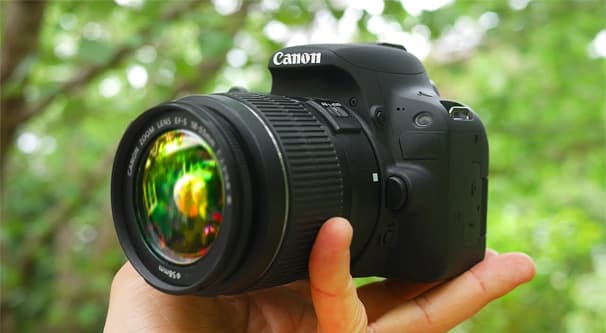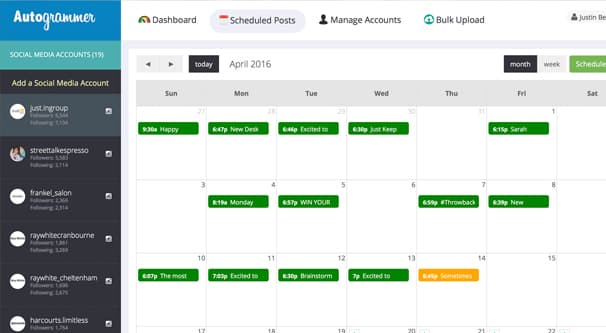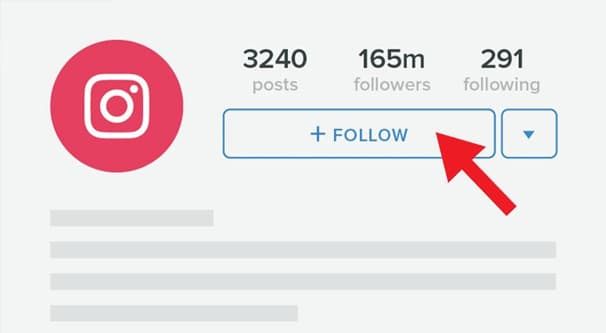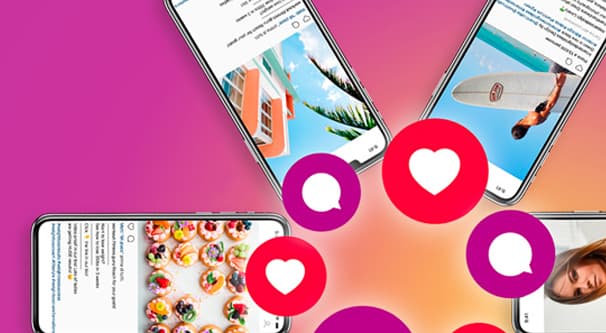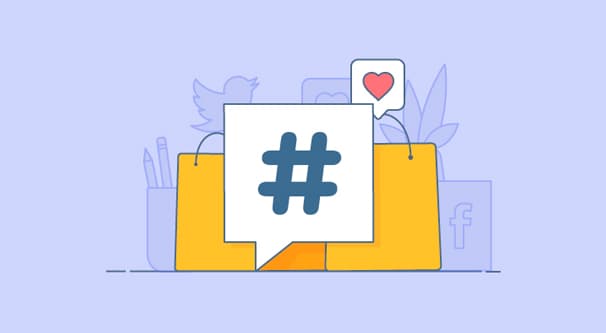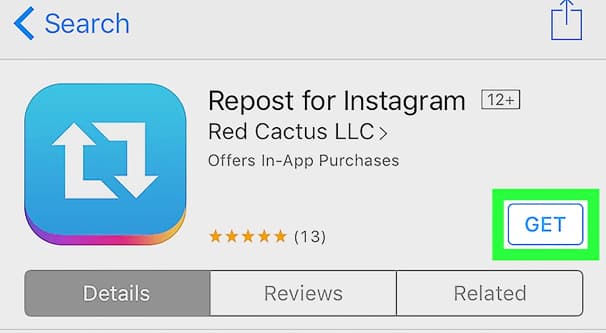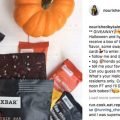I’m not the first to write a post about getting Instagram followers. Heck, this isn’t even my first post on the subject. I’m going to do something a little different this time, though. Rather than give you five or six well-reasoned tips you’ve probably heard before, I’m going to compile as many as I can find. I’ll go ahead and trust you all to figure out which ones work best for you and which ones you can leave on the table. Are you ready? Let’s dig in!
Ways to Get Free Instagram Followers
Never use an auto-like bot. There are a dozen or so pieces of software or services like Instagress that will build you a huge audience that doesn’t matter at all. Imagine you’re a theatrical performer and you have a sold-out show to perform. When you get there, you see two people in the audience, and every other seat is occupied by a cardboard cutout. Is that the kind of audience you want? Because that’s what you get with a follow-generator bot.
Likewise, don’t use exploits like the follow/unfollow method. Such techniques have very low rates of return, the follows you gain don’t last, and you’re likely to be banned from Instagram if you abuse them too heavily. Look up the Instagram rules against follower churn if you don’t believe me.
Personally, I don’t like the gray-hat hashtags that exploit mutual follows like #l4l, #ff, or #followback. They can work, but to me they tend to look trashy and the engagement you get tends to be low quality. Growth without them might be a bit slower, but it’s going to be higher quality. To me, that’s worthwhile. It’s up to you if you want to abuse them.
Connect to Facebook. You probably have an established Facebook profile, an existing audience, or even just friends and family you wouldn’t mind helping you out. Linking up with Facebook gives you better access to tools to share your Instagram account with your Facebook friends. You can also cross-post automatically.
Connect to Twitter. Instagram allows you to hook up a Twitter account so that, when you create a new IG post, you can automatically post it to Twitter. This isn’t necessarily going to get you a ton of followers, but it can help you share audiences between the two platforms.
Connect to blogs. Your blog in particular can be a good source of traffic, follows, and engagement. You can use the default Instagram option to embed an IG post into a blog post, where it will appear in a format users can interact with. It’s a lot better than a screenshot for when you know the post won’t be deleted in the future.
Post high quality content. What does high quality mean? Use a real camera, for one thing. Don’t be afraid to edit your images on PC with Photoshop, you’re not limited to the iPhone camera and whatever editing app is at the top of the app store this week.
Make sure your photos have good lighting, good composition, a good color focus, and so on. Oh, and turn off HDR mode; it’s a crutch. You’ll be able to take good photos without it.
It might be worthwhile to do some reading into photography tips, or even taking some basic classes to improve your skills. Even just knowing what all the little features your camera has is a big boon. I can’t tell you how many people I’ve seen using a fancy DSLR with default settings they never adjust because they don’t know what any of them do.
Post on a regular schedule. It can’t be overstated: a regular stream of content keeps your audience engaged. If you only post once a week, people will assume each and every post takes a week to develop, and that means you have to have exceedingly high quality posts. Since you won’t be able to maintain that level of quality consistently, you need to post a bit more often. Once a day is generally fine, but you can push it to see how many posts your audience supports before you start seeing diminishing returns.
Iterate. Every few weeks, once a month or so, or on whatever schedule you prefer, take a look at your Instagram analytics. Look for your top performing posts in that past span of time, and figure out why those posts were a success. Was it a specific hashtag you used, a community you tapped into, or just a really good photo? Whatever it was, figure out how to replicate that success and make it your new baseline.
Go out and like relevant photos. Other people are posting content all the time. You should browse that content and look for images that meet three criteria.
- They were posted recently, within the past few days, or a week at the most.
- They are high quality images.
- They fit the niche your account is trying to build.
When you find these posts, give them a like. You can also leave a comment on the particularly good posts, or those with particularly large or engaged audiences. As much as you like engagement on your photos, so do other creators, and they’ll often reward you. Feel free to follow relevant accounts as well. It can give you inspiration, engagement, and curation opportunities. Speaking of:
Follow relevant accounts. Any account you follow should be relevant to your content, have an active creator that engages with their audience, and an audience that engages with the creator and each other.
Try to avoid following accounts with little or no audience, with creators that never comment on their engagement, or accounts far outside your niche. You aren’t fishing for follows, you’re following people you want to see in your feed.
Respond to engagement. Whenever people come and comment on your content, strike up a conversation! You can learn a lot about your users this way, plus you can keep more users around for longer. You don’t have to strive to start a Real Talk with every emoji response, but you can thank them, and that’s often good enough.
Consider a Pod. Instagram pods are groups of people that use a specific hashtag, or simply browse one another’s profiles on a regular basis, and dedicate themselves to liking and commenting on each others’ content. Some people consider it an exploit and don’t like it, but it’s not actually that fundamentally different from any other supportive community. The key is to only join a pod that adheres to a specific kind of content, so you’re not randomly engaging with content way outside of your usual niche.
Seek out shout-outs. A lot of high profile Instagram accounts are perfectly willing to work with other Instagram users. Buying shout-outs is one solution, but we’re talking about free methods today. Instead, simply send the user a message. You might be able to DM them, or you might need to find their contact email. Regardless, you need to contact them with something they’ll read and respond to. You want a good mixture of flattery and professionalism, with a request to mutually shout out each others’ accounts at the end. Ideally, you can give each other a mention in a good post and refer audiences back and forth.
Run contests. There are all kinds of contests you can run on Instagram, with the prize being anything from a coupon code to a product to just a shout-out or user content feature on your feed. You need to ask yourself a few questions.
- What kind of contest do you want to run? A caption contest, a photo contest, a random raffle?
- Depending on how much effort the user has to put in to enter, what is an appropriate prize? You don’t necessarily want to give away a high value product to a basic caption contest, but asking for photography submissions in exchange for a 5% off coupon isn’t likely all that enticing.
- Do you want to use an app to run the contest? Gleam and other third party programs have contest apps that work quite well – and that users are familiar with already – but they might cost money to run, or might just not be suitable for the kind of contest you want to run.
Also, don’t over-use contests. Some brands find contests to be the only effective way to build an audience and start running them on an almost daily basis, but that just causes user fatigue. You’ll run into pretty steep diminishing returns.
Use plenty of hashtags. I’ve written entire articles on hashtag usage on Instagram. It’s worth reading them, but for now I’ll give you some distilled tips.
First of all, there’s almost no reason not to use every hashtag you can in your caption, but it’s rarely worthwhile to use the first comment for even more. When you’re picking hashtags, do a little research to make sure they aren’t shadowbanned. Even if they’re not shadowbanned, you want them to be active, and you want to make sure they mean what you think they mean. Some tags have been co-opted to mean specific things to specific communities, and using them makes you look ignorant.
I recommend that you divide up your hashtags into a few groups. Use a couple of branded hashtags, so you can keep track of your own posting efforts using special tags. Use some hashtags specific to the piece of content you’re posting, to get it as much relevant exposure as possible. Use a handful of generalist tags as well, the ones with huge audiences and probably low engagement. Experiment and you’ll eventually find a series of tags that works best for you. Don’t forget to use geographic tags if relevant, but don’t abuse them if they aren’t.
Learn your audience. The more you know about your audience, the better you can tailor your profile to their desires. In part, this means learning their preferences for image styles, dominant colors, subject matter, and so on. In part this means learning which hashtags you can use to reach them. It also means learning small details, like their demographics, and what time of day you can post to reach them at their peak. Remember, with chronological filtering, most Instagram users only see content posted relatively close to when they first signed on.
Consider reposts. There are two kinds of reposts. You can run a “greatest hits” of old content that may be relevant again. It’s a good way to get more use out of good photos you’ve taken, but you need to make sure the content is old enough. It makes no sense to repost an image you posted last month, since your audience probably saw it then. You want to appeal to users who haven’t seen your older content.
The other kind of repost is more post curation. If you see exceptionally high quality content posted by someone else, send that creator a message. Ask them if you can post that photo on your feed, with a caption that explicitly points out that they’re the creator and links to them. If you can get permission from the copyright holder, you can share some awesome content without needing to produce it yourself.
Add your tips. What are your favorite techniques? I don’t want to hear about your favorite follow-bot or follower seller, though, just give me good, solid, organic tips. If you’ve found yourself with a large, engaged audience, I’d love to hear how you got it.
